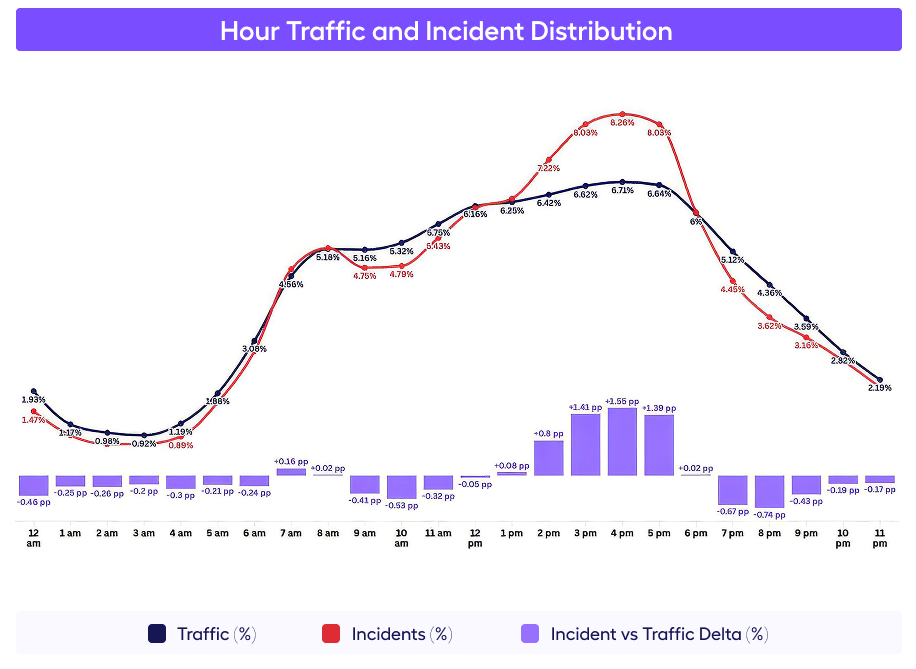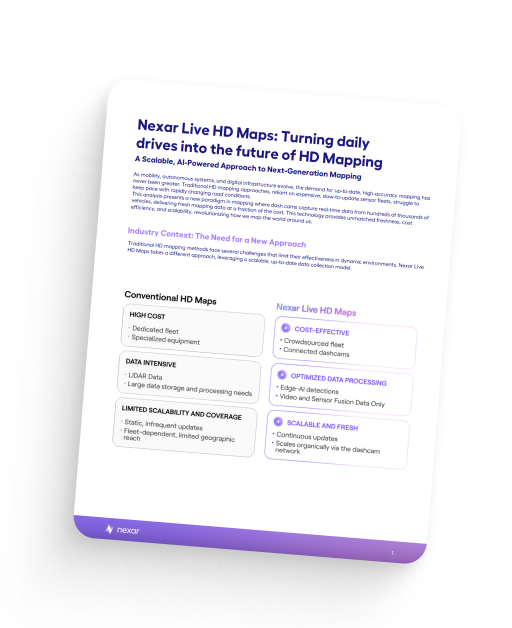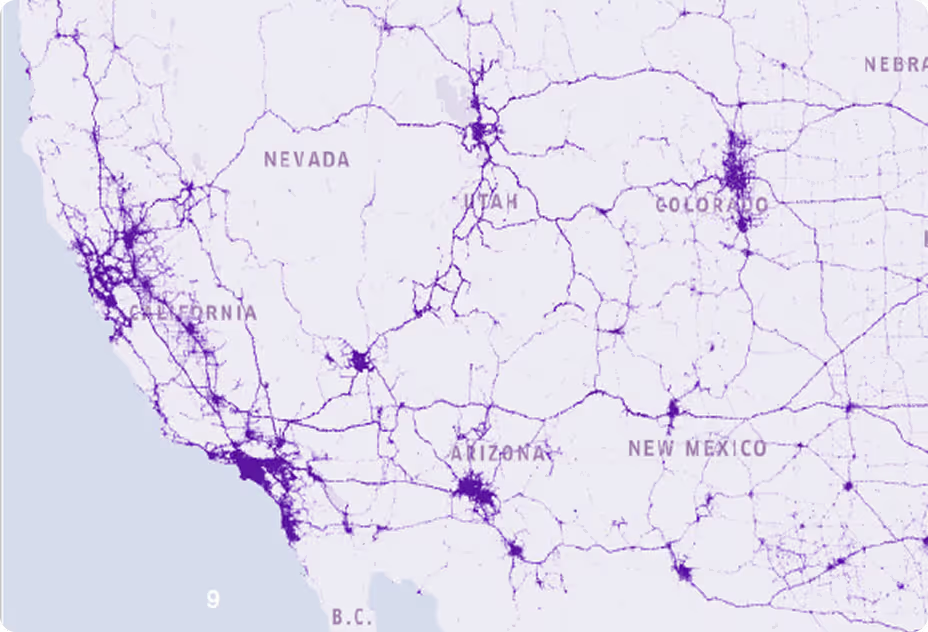Case study
Road Safety
Most Dangerous Hours on the Road
Nexar Team
Nov 20, 2025
5 minute read

On our path to contribute to Safer Roads, we asked a simple but relevant question: What’s the most dangerous time of day to be on the road? General intuition tells us that commute hours are usually the worst. Is this true? And if so, how much? To answer this question, we deep dived on our historical records and looked into ride records, as well as road incidents registered (hard brakes and collisions).
So, what does Nexar historical data teach us?
Globally, statistical data collected by Nexar’s “eyes on the road” validate the empirical intuition and perception: main commute hours are indeed the moments with the biggest traffic and vehicles on the road, as well as the biggest number of incidents registered.
The first reaction is that, as expected, a bigger number of vehicles on the road will lead to more incidents. Also, begs the question: this increase in incidents being flagged is because more eyes on the road will also tend to register more cases, or is it because, in fact, these are indeed more dangerous hours to be on the road?
Our data shows that there is indeed a tendency for driving to be more chaotic and prone to accidents or dangerous events. Let’s deep dive, then.
As a context, it’s clear the existence of 2 opposite cycles in traffic flow:
A growing cycle, from 4 am to 4 pm, where the amount of cameras on the road increases almost continuously from hour to hour, with a subtle ‘sub-peak’ at 8 am to be highlighted;
A cycle of constant decreasing traffic, starting after 4 pm until 3 am.
Hour traffic and incident distribution
The hours with the biggest incidence of traffic and vehicles on the road are between 3 pm and 5 pm, accounting for 20% of the daily traffic.
The incidents have a similar cycle trend: constant increase from 4 am to 4pm, and a recurrent retraction in the following hours. In a sense, it validates the theory of “more vehicles, more incidents being reported”.
Moreover, the distribution and weight of incidents being registered are even more pronounced during this period: over 24% of the incidents are being registered between 3 pm and 5 pm.

The most chaotic hour is at 4 pm with traffic reaching its peak (6.71%) as well as incidents (8.26%), being closely followed by 5 pm (6.64% of traffic and 8.03% of incidents) and 3 pm (6.62% of traffic and 8.03% of incidents as well), with 2 pm not far back on both metrics.
The immediate conclusion is that 3 pm to 5 pm is definitely the most dangerous period to be on the road. Also, the comparison of the incident weight distribution against traffic also highlights a new fact: there is a clear excess of incidents during this period.
At 2 pm the incidents exceed the traffic by 0.8 percentual points, at 3 pm by 1.41, 1.55 at 4 pm and 1.39 at 5 pm. It means that, for instance at 4 pm, the number of incidents is more than 23% higher than it would be expected given the amount of vehicles on the road.
These numbers highlight that the afternoon commute is much more dangerous and it goes even beyond the impact of the traffic, showing that additional factors, such as fatigue after a long day of work, stress and the pure eagerness to arrive home (to name only a few) have a huge impact on road safety and contribute to a considerably higher likeliness to register an incident.
It’s also relevant to mention that, although in a completely different dimension, early morning commute also evidences a small excess of incidents (+0.16 pp at 7 am and +0.02 pp at 8 am). However, the considerably less number of incidents being registered accompanied by a not as relevant delta versus traffic, shows that drivers tend to be more alert and aware of the road, which when compared to the afternoon commute, reinforces the impact of the fatigue and stress on the second case.
On a rather different note, the numbers also show a rather unexpected curiosity: driving during night hours tends to be not only quieter but also safer: only 9.37% of incidents are registered between 10 pm and 4 am, while these 7 hours are responsible for 12.2% of traffic flow.
This phenomenon may have several explanatory factors:
Less vehicles on the road lead to a significant reduction of risk factors:
- there’s more space on the road, which allows for an increased time of planning and preparation for any potential event, despite the reduced visibility compared to daylight;
- less factors of distraction and doubt, as well as less drivers with potential erratic behavior;
Increased exigency level due to lower visibility tends to make drivers more alert, driving more carefully and doubling their attention to the road.
As a final conclusion, Nexar data shows that in fact, commute hours are, as expected, the most chaotic and challenging, not only in the straight amount of traffic flow and vehicles on the road, but also the most dangerous and prone to incidents.
The afternoon commute is, by far, the most complicated and dangerous, particularly from 3 pm to the end of 5 pm, reaching its peak at 4 pm.As a contrast, driving at night tends to be much safer and calmer, not only having less vehicles on the road but also a reduced likelihood to face an incident.


